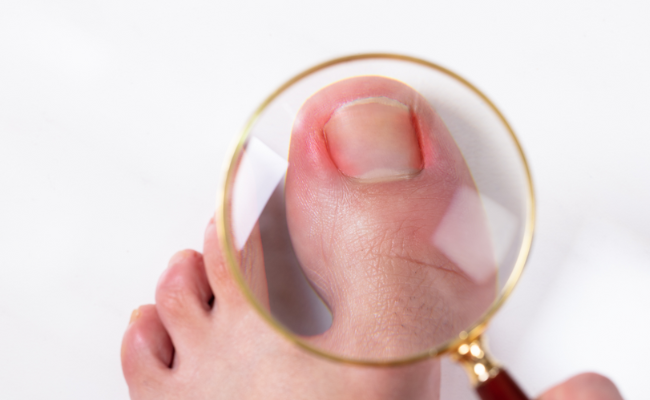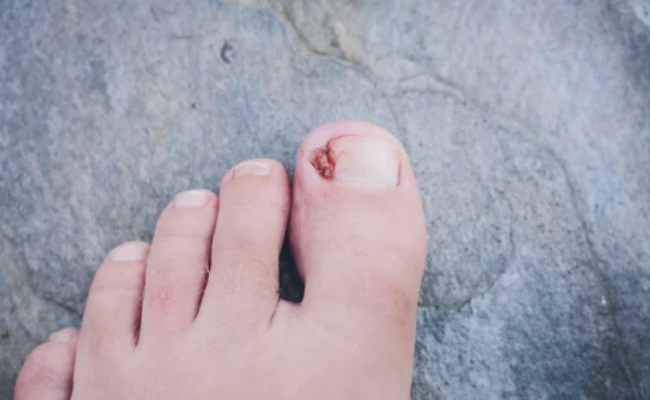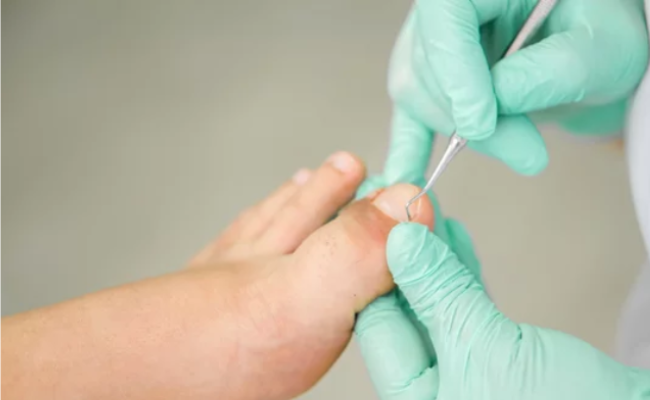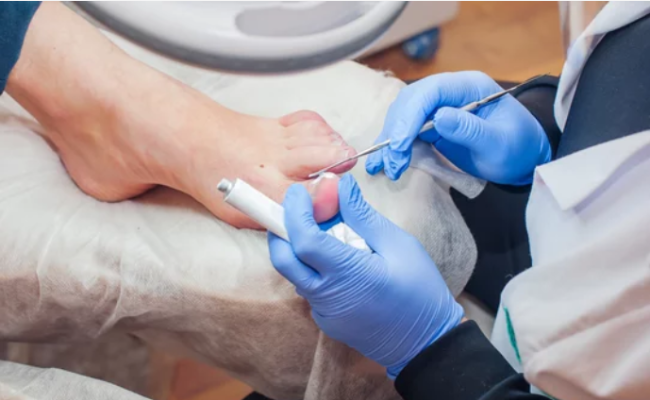Ingrown Toenail Removal: A Step-by-Step Guide
Ingrown toenails are a painful and frustrating condition to deal with. It occurs when the corner or edge of the toenail grows into the skin. This may cause discomfort, inflammation, and even infection. While mild cases are manageable with proper foot care, severe cases may need ingrown toenail removal.
This article will discuss safe and effective ingrown toenail removal, whether at home or with the help of a healthcare professional. Follow these techniques to ease discomfort and prevent future occurrences of ingrown toenails.
Understanding Ingrown Toenails

Causes of ingrown toenails include genetics, improper footwear, and nail trimming techniques. Also, wearing shoes that fit too tightly or participating in activities that put pressure on the big toes.
People with thick nails are more likely to develop ingrown toenails, causing irritation, redness, and swelling around the affected area.
To identify an ingrown toenail, look for signs of redness or swelling around the nail. Also, look out for pain or tenderness when pressure is applied. In severe cases, the skin may become broken. The area may also develop pus or other signs of infection.
You may also like: How to Remove Acrylic Nails at Home
Treatment Options for Ingrown Toenails
Photo credit: Adobe Stock
When choosing an ingrown toenail treatment, it’s essential to consider the severity of the condition. It is also necessary to weigh each treatment’s potential risks and benefits.
Conservative treatment methods can be effective in managing mild cases of ingrown toenails. Soak the affected area in warm water several times daily to help reduce inflammation and pain. Dental floss or a small piece of cotton to lift the edge of the nail can also ease discomfort.
In more severe cases, medical treatment options may be necessary. Partial or complete toenail removal might be the last resort to treat ingrown toenails. During the procedure, a healthcare professional will remove the edge of the nail that is causing the problem.
The toe may be numbed with local anesthesia to minimize discomfort. Your doctor may also prescribe medication to prevent or treat an existing infection.
Conservative treatment methods are non-invasive and can manage mild cases of ingrown toenails. But, they may be less effective in severe cases.
Medical treatment options, such as toenail removal, can provide long-lasting relief from ingrown toenails. Still, the procedure risks nerve damage, bleeding, and infection. When choosing an ingrown toenail treatment, it’s essential to consider the severity of the condition.
Photo credit: Adobe Stock
Safe Ingrown Removal at Home
Removing an ingrown toenail at home can be done with the proper tools and precautions. You may follow these steps:
- Soak the toe in warm soapy water for 10-15 minutes to soften the nail and reduce inflammation.
- Sterilize the necessary tools, including sharp nail scissors, a nail file, and tweezers.
- Using the nail scissors, carefully trim the ingrown nail straight across.
- Use the nail file to smooth rough edges or corners.
- Gently lift the ingrown nail off the nail bed with the tweezers. Place a small cotton or dental floss underneath to help the nail grow above the skin.
- Apply ointment to the affected toe and cover it with a bandage.
- Change the bandage daily.
- Repeat this process until the nail has fully grown out and is no longer ingrown.
- Take pain medication, such as ibuprofen, as directed to reduce pain and inflammation.
- You may also apply a cold compress to the affected area for 20 minutes to reduce swelling. This numbs your toe.
Do not attempt to remove an ingrown toenail at home if:
- You have diabetes or a frail immune system.
- You experience any signs of infection, such as fever, redness, or pus.
- The ingrown toenail is severely infected, bleeding, or causing extreme pain.
You may also like: Side Effects of Dip Powder Nails You Should Know
Professional Ingrown Removal
Professional ingrown toenail removal is an effective procedure that can ease discomfort and prevent further complications. A podiatrist or foot specialist usually performs this procedure. It involves the following steps:
Numbing the affected toe: The toe is numbed with a local anesthetic to minimize discomfort during the procedure.
Removing the edge or corner of the nail: The podiatrist will use a special tool to remove the edges or sides of the nails causing the problem. This may involve trimming the nail or removing it completely.
Treating the affected area: After removing the nail, the podiatrist will clean the area and apply ointment to prevent infection.
Bandaging the toe: The toe will be bandaged to protect the area and promote healing.
Seeking professional help reduces the risk of infection and complications associated with self-treatment. A podiatrist has the expertise and tools to safely remove the nail and prevent further damage to the toe.
Photo credit: Adobe Stock
Prevention Tips for Ingrown Toenails
Preventing ingrown toenails is important to avoid the pain and discomfort they can cause. Here are some prevention tips to keep your toenails healthy:
- Trim your toenails straight
- Avoiding cutting toenails too short or rounding the corners.
- Use a sharp nail clipper or scissors and avoid tearing or ripping your nails.
- If you have difficulty trimming your toenails or have thick nails, consider seeking professional help from a podiatrist.
- Wear fitting shoes with enough space for your toes to move comfortably.
- Avoid shoes that are too narrow, especially in the toe box area. High heels and pointy shoes can increase the risk of ingrown toenails.
- Practice good foot hygiene, like washing your feet daily and keeping them dry.
- If you sweat excessively, use foot powder to help keep your feet dry.
- Choose appropriate shoes if you participate in activities that stress your toes, such as running or playing sports.
Conclusion
Ingrown toenails can lead to further complications if not treated properly. It is necessary to seek medical attention and professional ingrown toenail removal if you experience extreme pain from an ingrown toenail.
If professional help is not immediately available, you can perform safe home removal techniques with proper tools and hygiene precautions. Proper nail trimming techniques, appropriate footwear, and regular foot hygiene are vital in preventing the development of ingrown toenails.




